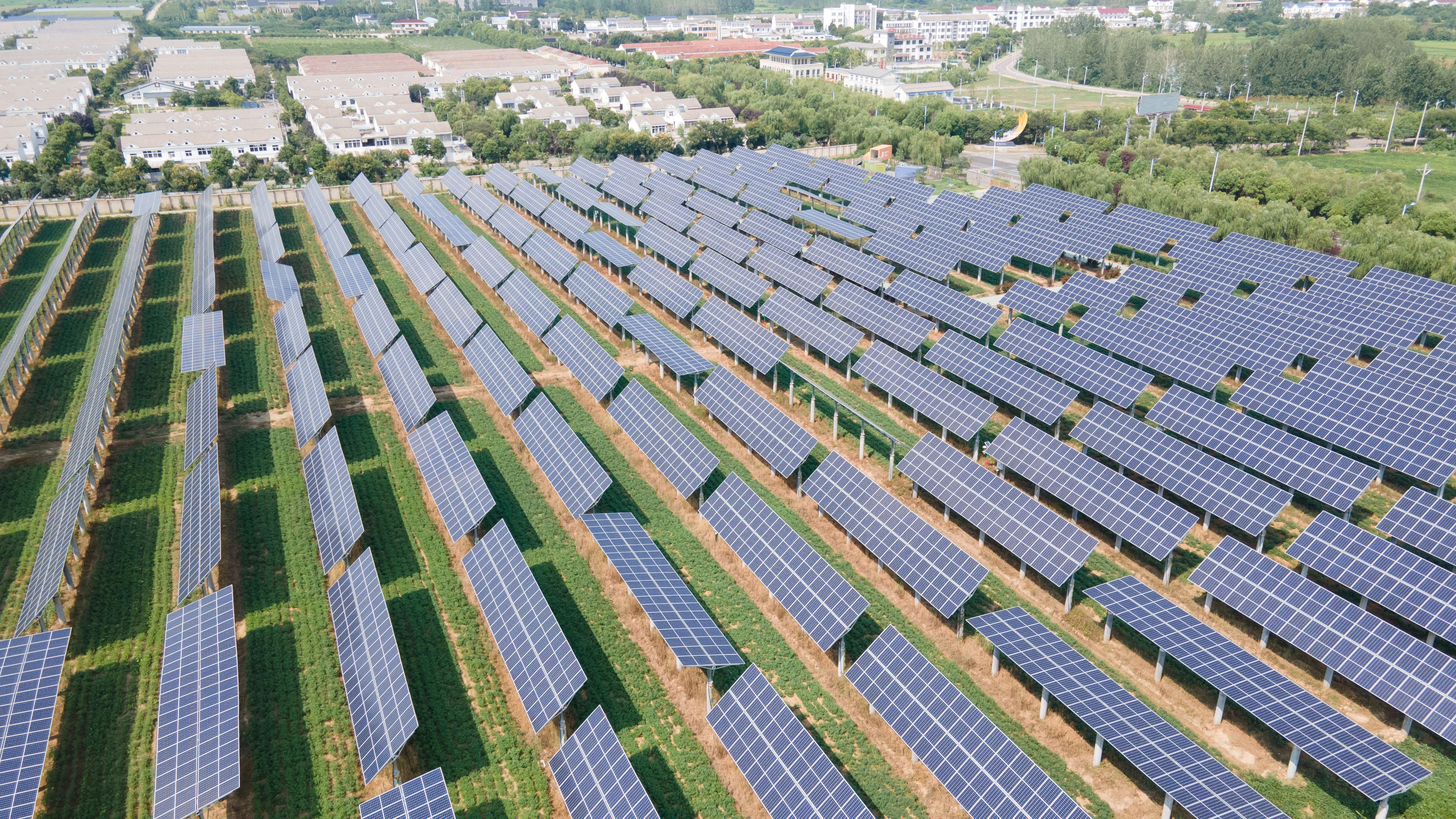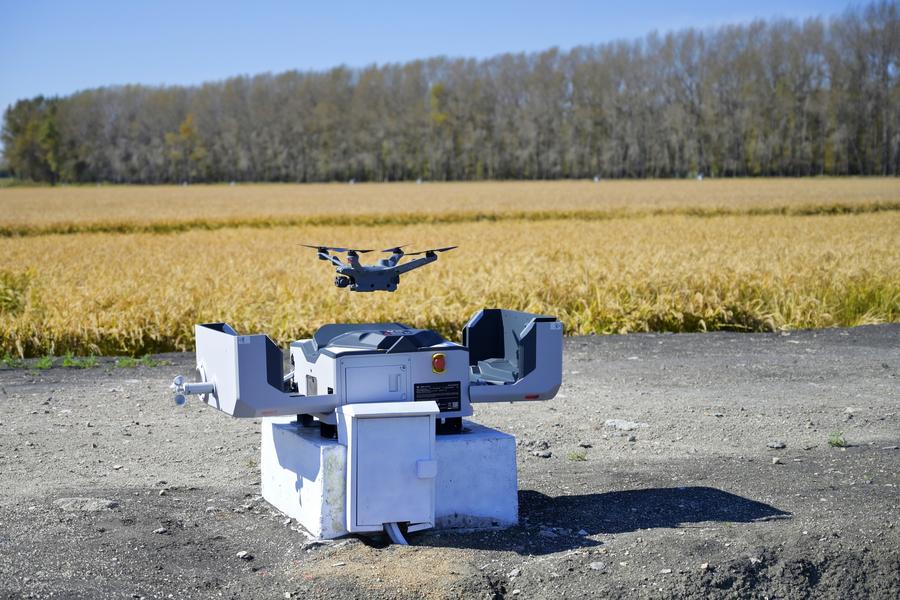Key Areas for Creating New Prospects for Rural Revitalization

China’s agricultural development efforts have always been based on the principles that a country must first strengthen agriculture to make itself strong, and only when agriculture is strong can the country be strong.
The Central Rural Work Conference was held in Beijing from December 17 to 18. At the conference, President Xi Jinping highlighted achievements in 2024, including record high grain output, steady increase in farmers’ incomes, and harmony and stability in rural areas; and pointed out that they provide a solid foundation for promoting high-quality economic and social development.
According to data from the National Bureau of Statistics, the total grain output in 2024 reached 706.5 million tons, an increase of 1.6 percent from the previous year. In the first three quarters, the per-capita disposable income of rural residents stood at 16,740 yuan ($2,294), a 6.6 percent increase.
New approaches have enhanced rural governance, fully engaging residents as active participants in community-level governance, and contributing to a more stable rural society. As a result, residents of rural areas have gained an enhanced sense of fulfillment, happiness, and security during the process of rural revitalization.
President Xi also noted that to do a good job on work related to agriculture, rural areas and rural residents in 2025, China must also promote integrated urban-rural development, further deepen rural reform and improve the support system for strengthening agriculture, bringing benefits to rural residents and increasing their incomes, and comprehensively promoting rural revitalization. Rural revitalization is a core component of the central authorities’ strategies to promote more balanced economic and social development nationwide.
China’s agricultural development efforts have always been based on the principles that a country must first strengthen agriculture to make itself strong, and only when agriculture is strong can the country be strong. To fully build a modern socialist country, the work related to agriculture, rural areas and rural residents must remain a priority, with efforts focused on rural revitalization and modernization. Strategic planning and decisive actions are needed to achieve these goals.
Deepening reform
The conference emphasized that it is imperative to implement the tasks of comprehensively furthering rural reform, and promoting the orderly advance of the pilot program for villagers to contract their land for another 30 years after the second round of land contracts expire. Effective models should be explored for villagers to make the best use of empty rural housing through leasing, equity participation, or cooperative arrangements. Furthermore, investment and financing mechanisms for rural revitalization should be innovated to unleash the potential and dynamism of related initiatives.
“This policy enhances farmers’ sense of security regarding land contract rights and motivates long-term land protection and investment. From 2025 to 2029, it is crucial to implement pilot projects and summarize experience to ensure the reforms progress smoothly,” Huang Jikun, dean of the School of Advanced Agricultural Sciences at Peking University, told Xinhua News Agency.

The core task of rural reform remains addressing the relationship between farmers and land. In China’s rural areas, long-term land contracts guarantee farmers’ rights to use the land owned by the collectives and the state. The rural land contract system, known as the household contract responsibility system, originated in Xiaogang Village of Anhui Province in 1978, when 18 villagers secretly signed a contract to divide the communally-owned farmland into pieces for individual households to farm, with the villagers to take full responsibility for their profits and losses. In the years after signing the contracts, the once poverty-stricken farmers in the village reaped harvests and became richer. In the 1980s, the system was approved by the government and rolled out across the country.
The land contract has an extendable term of at least 30 years. Starting in 2023, the second round land contracts began expiring, with a peak period of expiration expected over the next five years. The extension of land contracts has already commenced in Anhui and Hunan provinces and Guangxi Zhuang Autonomous Region.
In the new era, Anhui has continued to lead in rural reform initiatives.
The province has developed an “eight-step approach” to land contract extensions, encompassing tasks such as electing working groups, conducting surveys, drafting extension plans, holding village meetings to approve plans, organizing villagers to implement the plans, signing contracts, completing registration procedures, and improving record management. This systematic workflow has significantly improved efficiency and serves as a model for other regions.
By the end of November 2024, Anhui had completed contract extensions for 4.271 million households across 27 counties, accounting for 97.7 percent of households with expiring contracts within the province.
“For rural reform, the journey is ongoing,” Sang Qiangbing, Deputy Director of the Policy and Reform Division at the Anhui Provincial Department of Agriculture and Rural Affairs, told Xinhua. “By focusing on the farmer-land relationship, we continue to deepen reforms, strengthen the rural basic management system, and advance comprehensive rural revitalization, achieving remarkable results.”
New quality productive forces
The new quality productive forces featuring new economic models, new businesses and new industries are the core driving force for the high-quality development of agriculture. The conference emphasized that it is essential to coordinate all strengths in agricultural science and technology to make breakthroughs, speed up promoting the broad application of scientific and technological advances, and develop new quality productive forces in agriculture according to local conditions.

To accelerate the process of agricultural modernization in China and achieve the historical leap from a large agrarian country to a world-class agricultural powerhouse, it is urgent to develop the new quality productive forces in agriculture, driven by innovation and empowered by technology.
“The new quality productive forces lay a solid foundation for achieving agricultural modernization and the goal of becoming a strong nation by enhancing production capacity, expanding sectors of production, improving production efficiency, strengthening production resilience, and increasing incomes from agriculture,” Zhang Qi, Director of the Rural Revitalization and Development Research Center at Beijing Normal University, told China National Radio.
On December 11, 2024, DJI, a global leader in drone technology, unveiled its latest flagship drone, the T100, in Zigui County, Hubei Province, following the launch of new products. This cutting-edge technology, developed by DJI, is helping Zigui oranges “fly” out of the mountains, enabling a comprehensive upgrade in mechanization for local pillar industries. Today, drones are widely used in sowing, fertilizing, and plant protection, and have driven the booming development of the plant protection service industry. In Zigui’s complex terrain, drone technology effectively offers spraying solutions while significantly improving transportation efficiency and operational safety, injecting new vitality into the modernization of the local citrus industry, from plant protection to harvesting.
Shen Xiaojun, head of marketing for DJI Agriculture, told the People’s Daily, “Since introducing drone technology to the agricultural sector in 2012, the industry has experienced leapfrog development.” Shen added that DJI Agriculture began with a focus on plant protection operations and over the past 12 years has gradually expanded to applications in seeding and lifting, achieving comprehensive application of drone technology across all steps in agricultural production. In 2024, the number of DJI agriculture drones in operation reached 200,000 units, creating jobs for nearly 500,000 people in related services.
“China’s fundamental agricultural challenges lie in a large population and limited land, and tight food supply and demand, which have not changed fundamentally, and the foundation of food security remains fragile,” Mao Shiping, a researcher at the Institute of Agricultural Economics and Development, told Xinhua.
“Compared with non-agricultural industries, agricultural production efficiency is low, and agricultural comparative advantages are weak, leading to insufficient international competitiveness in agricultural products. Meanwhile, China’s agricultural innovation capacity is inadequate, and many key areas of agricultural science and technology still face critical challenges. The development of new quality productive forces in agriculture is especially urgent,” Mao said.
To further develop new quality productive forces in agriculture, Hu Bingchuan, a researcher at the Rural Development Institute of the Chinese Academy of Social Sciences, offered four key suggestions. First, promote collaboration in agricultural science and technology, enhance innovation, and speed up the application of scientific achievements. Second, improve talent cultivation by updating agricultural education curricula and training local rural talents to enhance their technological literacy. Third, advance smart agriculture by applying intelligent machinery and precision technologies for sustainable production. Fourth, strengthen policy support by establishing incentive mechanisms and institutional guarantees for agricultural innovation.

Urban-rural integration
The Communiqué of the Third Plenary Session of the 20th Central Committee of the Communist Party of China emphasized that integrated urban and rural development is essential to Chinese modernization.
“Urban and rural areas perform irreplaceable functions and they will coexist symbiotically in the long term. In the process of promoting urban-rural integrated development, we must also emphasize the independence of rural areas and the important role of rural functions,” said Tu Shengwei, a researcher at the Academy of Macroeconomic Research, in an interview with the Economic Daily.
Cities, with their strengths in population, industry, capital, and technology, can boost rural development; whereas the rural areas, with their roles in agricultural production, ecological barriers, and cultural heritage transmission, are strong support for cities.
Beijing Daxing International Airport has set an example in promoting urban and rural integration. It has provided employment opportunities to surrounding rural areas. “Since Beijing Daxing International Airport began operation in 2019, it has created a large number of frontline jobs in Weishanzhuang Town, located about 15 km from the airport, providing stable employment opportunities for local and surrounding residents and promoting regional economic development,” Bai Yu, head of communications department of Weishanzhuang Town, told Beijing Review.
Rural areas are not only home to nearly 500 million people in China, but as modernization progresses and people become richer, they increasingly enjoy the idyllic beauty of mountains and rivers. Rural areas are becoming popular destinations for relaxation, sightseeing, and nostalgia. In 2023, Beijing launched a Green Rural Revival project, with Lijiachang Village in Weishanzhuang Town, Daxing District, selected as one of the first batch of demonstration villages under the project. Such projects, first introduced in Zhejiang Province, aim to promote comprehensive rural revitalization. The village has integrated leisure agriculture and tourism, bringing visitors an experience of pastoral life.
In addition, Lijiachang Village is leveraging the popularity of online farming games to develop new agricultural business models. On 25 acres of collective farmland, the village has created a smart farming experience park through which netizens can “farm” on their phones and harvest in real life, fulfilling a growing interest in rural life while generating income for farmers. The park features data collection, smart farmland management, and water-fertilizer integration systems, allowing users to remotely monitor crop growth and control irrigation through their phones. On-site caretakers provide professional guidance to ensure the healthy growth of the crops.
These cases demonstrate that urban and rural residents can share high-quality, beautiful lives to achieve common prosperity.
 Facebook
Facebook
 Twitter
Twitter
 Linkedin
Linkedin
 Google +
Google +










